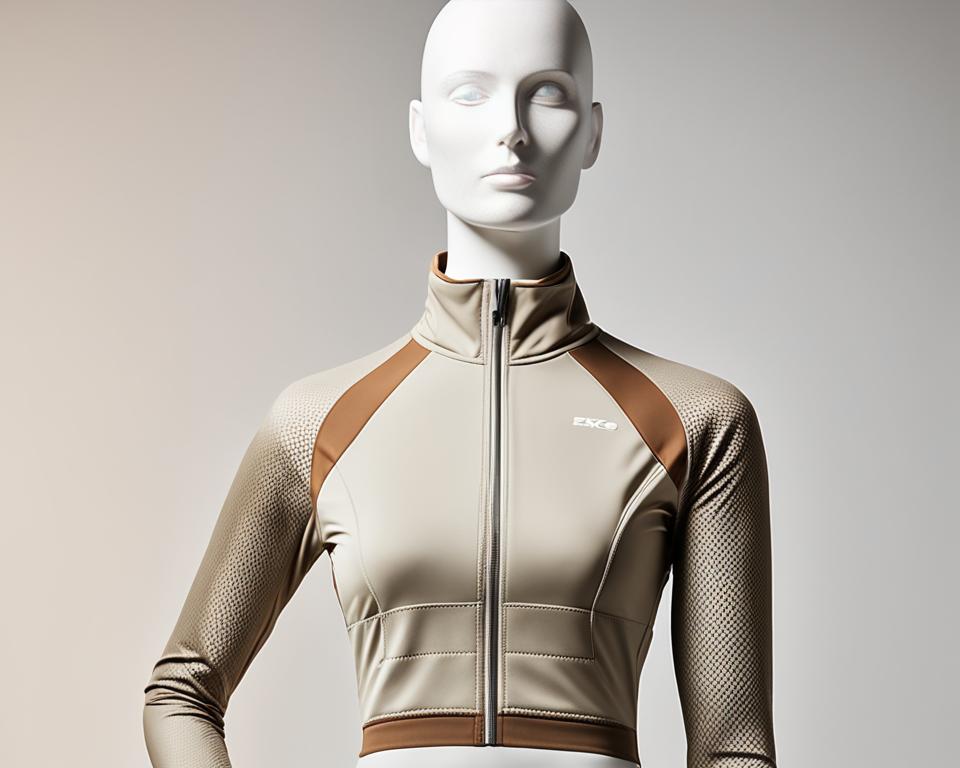How To Start A Clothing Business With Buying Wholesale ,Are you considering starting your own clothing business but worried about the high costs and low profit margins? What if I told you there’s a way to enter the market at the lowest price possible while still ensuring a decent profit? By buying wholesale, you can acquire inventory at a lower cost and sell your products with a markup, setting yourself up for success in the competitive world of clothing retail.
But how exactly do you go about starting a clothing business with buying wholesale? What are the steps involved and the key considerations to keep in mind? In this article, I will provide you with a comprehensive guide on how to begin your journey as a clothing business owner by leveraging the power of wholesale sourcing.
Do the Business and Legal Work First
Before starting a clothing business, it’s essential to take care of the necessary business and legal requirements. This includes obtaining the appropriate permits and licenses to operate your business legally. Additionally, business insurance is crucial to protect your venture from potential risks and liabilities.
Once you have the legal aspects in place, finding a suitable location for your store is the next step. While it doesn’t have to be in an expensive area, it should be clean and inviting to attract customers. Consider factors such as foot traffic, accessibility, and the overall ambiance of the area.
Furthermore, developing a well-thought-out marketing plan is paramount to generating buzz and attracting customers to your store. This plan should include strategies for online and offline marketing, promotion, and advertising initiatives.
Obtaining Business Permits and Licenses
Acquiring the necessary business permits and licenses is a crucial step in starting your clothing business. These legal requirements ensure that you comply with local regulations and operate within the law. The specific permits and licenses you need may vary depending on your location.
Research the specific permits and licenses required by your city or state. Contact the appropriate government agencies or visit their websites to learn about the application process and any associated fees. It’s critical to complete these steps diligently and in a timely manner to avoid any legal complications later on.
Securing Business Insurance
While no one likes to think about potential mishaps, having adequate business insurance is essential for protecting your clothing business. The right insurance coverage can help safeguard your investment and provide financial protection in case of accidents, property damage, or lawsuits.
Consider consulting with an insurance agent who specializes in small businesses to determine the most suitable coverage for your specific clothing business. They can guide you in selecting policies such as general liability insurance, property insurance, and workers’ compensation insurance, depending on the nature and scale of your operations.
Choosing a Suitable Location
The location of your clothing store plays a significant role in its overall success. It’s essential to find a place that is accessible to your target market and aligned with your brand image.
Consider factors such as foot traffic, proximity to complementary businesses, and parking availability. A clean and welcoming environment can also significantly impact how customers perceive and interact with your store.
Developing a Marketing Plan
A comprehensive marketing plan is crucial for attracting customers and driving sales to your clothing business. It outlines the strategies and tactics you’ll use to promote your brand, reach your target audience, and generate awareness.
Start by conducting thorough market research to understand your target market’s preferences, demographics, and shopping behaviors. This will help you tailor your marketing efforts to effectively communicate with and engage your potential customers.
Develop a marketing plan that includes a mix of online and offline strategies. This can include digital advertising, social media marketing, content creation, email marketing, traditional advertising, and community outreach initiatives.
In this competitive industry, a strong marketing plan can make all the difference in attracting customers and growing your clothing business.
Determine Your Clothing Niche
To stand out in the clothing industry, it’s important to identify your target market and determine the niche that you want to specialize in. By understanding the unique needs and preferences of your customers, you can tailor your business to cater to their specific tastes.
Study your Market:
Start by conducting thorough market research to gain insights into your target audience. Analyze demographic data, such as age, gender, location, and income level, to understand who your potential customers are. Identify any gaps or underserved areas in the market, where customers may be looking for specialized clothing options.
| Market Segment | Description |
|---|---|
| Children’s Clothes | Clothing designed specifically for infants, toddlers, and young children between the ages of 0-12. |
| Clothing for Tweens | Clothing designed for children between the ages of 8-14, bridging the gap between children’s and adult apparel. |
| Big and Tall Teen Males | Catering to teenage males who are taller or larger in size than average, providing clothing that fits and flatters their body types. |
Specialized Clothing:
Consider offering specialized clothing or accessories that are not readily available in your area. This could be sustainable or organic clothing, inclusive sizes for all body types, or culturally inspired designs. Providing unique products within your niche will attract customers looking for something different and establish your brand as a go-to destination for specialized clothing.
“By identifying and serving an underserved market segment, you can position your clothing business as a leader in the specialized clothing industry.” – Emily Anderson, Founder of EcoThreads
By determining your clothing niche and catering to the needs of an underserved market, you can differentiate yourself from the competition and build a loyal customer base. Remember to continuously evaluate your customers’ changing preferences and adapt to emerging trends to stay relevant in the ever-evolving clothing industry.

Find Wholesalers Online
Once you have a clear plan for your clothing business, it’s time to find reputable wholesalers to source your inventory from. This step is crucial in ensuring that you have access to quality products at competitive prices.
When searching for wholesale suppliers, there are a few strategies you can employ to make your search more efficient:
- Visit the websites of specific clothing brands that you’re interested in selling. Many brands offer wholesale options directly on their websites, allowing you to establish a relationship with the brand and easily access their merchandise.
- Look for websites of companies that represent multiple clothing brands. These companies act as intermediaries between retailers and wholesale suppliers, offering a wide range of products from different brands all in one place.
Once you have identified potential wholesale suppliers, it’s important to reach out to them directly. Contact the wholesalers and apply for a wholesale account. Some suppliers may require proof that you are operating a legitimate business, so be prepared to provide any necessary documentation.
Developing strong relationships with wholesalers is key to your long-term success. By establishing trust and loyalty, you can unlock various benefits such as preferred pricing, access to in-demand merchandise, and flexible payment terms.
Remember, finding the right wholesale suppliers is an ongoing process. It’s recommended to regularly evaluate your suppliers and explore new options to ensure you are always sourcing the best products at competitive prices.
Benefits of Developing Relationships with Wholesalers:
- Preferred Pricing: Building a solid relationship with your wholesale suppliers can lead to discounted prices, allowing you to maximize your profit margins.
- Access to In-Demand Merchandise: By cultivating relationships with reputable wholesalers, you may gain access to exclusive and highly sought-after products that are in high demand among your target market.
- Flexible Payment Terms: As you develop trust with your suppliers, they may offer more flexible payment options, such as extending credit terms or providing payment plans, allowing you to manage your cash flow more effectively.
Other Inventory Options
While buying wholesale is a popular method for acquiring inventory for your clothing business, there are other options worth exploring. By diversifying your sourcing channels, you can discover unique products and secure competitive pricing. Here are some alternative inventory options to consider:
1. Industry Trade Shows
Attending industry trade shows presents a valuable opportunity to connect with representatives from various clothing brands. These events allow you to meet in person, discuss partnership opportunities, and even inspect merchandise samples before making purchasing decisions. Trade shows offer firsthand insights into emerging trends and enable you to forge relationships with key players in the industry. Plan your presence at relevant trade shows to expand your network and stay updated on the latest fashion offerings.
2. Purchasing from Closing Stores
When stores go out of business or sell off-season merchandise, it can be a profitable opportunity for your clothing business. Explore local retail establishments that are closing down and inquire about purchasing their remaining inventory at discounted prices. Not only can you acquire quality products at lower costs, but you may also uncover hidden gems that resonate with your target market. Keep an eye on local marketplaces and advertisements to stay informed about potential deals.
3. Liquidation Jobbers
Liquidation jobbers specialize in purchasing unsold merchandise from major retailers and offering them in lots to resellers. Collaborating with liquidation jobbers can provide you with access to a wide range of inventory, including designer clothing and brand-name products. This option allows you to acquire merchandise at reduced costs, enabling attractive profit margins when reselling. Research reputable liquidation jobbers in your area or explore online platforms to discover available merchandise lots.
By exploring industry trade shows, purchasing from closing stores, and collaborating with liquidation jobbers, you can diversify your inventory and offer your customers a unique selection. Remember to assess each option’s suitability for your business and negotiate pricing and terms to ensure a successful inventory acquisition strategy.
“Diversifying your inventory sourcing channels can help you discover unique products and secure competitive pricing.”
| Option | Benefits | Considerations |
|---|---|---|
| Industry Trade Shows | – Face-to-face connections with brand representatives – Opportunity to inspect merchandise samples – Access to emerging trends |
– Travel and accommodation expenses – Limited availability of specific brands |
| Purchasing from Closing Stores | – Discounted prices on inventory – Potential for unique and rare finds |
– Limited stock availability – Time-sensitive opportunities |
| Liquidation Jobbers | – Access to diverse inventory at reduced costs – Potential for high-profit margins |
– Varied quality of merchandise – Requires research to find reputable jobbers |

Pricing Your Products
Pricing your products correctly is crucial for the success of your clothing business. One commonly used pricing strategy in the retail industry is the keystone pricing method. This approach entails setting the retail price at double the wholesale cost. However, it’s important to consider various factors to ensure your pricing is competitive and allows for a reasonable profit margin.
When setting your prices, take into account market competition, customer demand, and your desired profit margin. Conduct thorough market research to evaluate the prices of similar products in your niche. Analyze the pricing strategies of your competitors and identify any unique selling points that justify a higher price point for your products.
Additionally, understanding customer demand is crucial. Seek input from your target market through surveys, focus groups, or social media engagement. Determine what price range they find reasonable and whether they perceive value in your products at that price point.
It’s important to strike a balance between offering competitive pricing and maintaining a healthy profit margin. Lowering your prices too much may attract customers initially, but it could harm your long-term profitability. Conversely, setting prices too high may deter potential customers and result in unsold inventory.
Regularly monitor your profit margins to ensure they align with your business goals. Continuously evaluate your expenses, such as manufacturing and distribution costs, to accurately calculate your profit margin. Consider implementing pricing strategies that allow for discounts or promotions without compromising your profit margin.
Remember, pricing is not a one-time decision. It’s an ongoing process that requires monitoring and adjustment as market conditions change. Stay updated with industry trends, competitor pricing strategies, and consumer behavior to make informed pricing decisions that maximize your profitability.
By implementing a strategic pricing strategy that considers keystone pricing, competitive pricing, and profit margin, you can position your clothing business for success in the competitive retail industry.
img {
display: block;
margin: 0 auto;
max-width: 80%;
height: auto;
border: 1px solid #ccc;
border-radius: 5px;
box-shadow: 0 0 5px rgba(0, 0, 0, 0.1);
}
Final Words on How To Start A Clothing Business With Buying Wholesale
Starting a clothing business by buying wholesale is an excellent strategy to set yourself up for success. By following the tips provided in this guide, you can establish a solid foundation for your venture. Take the time to handle the necessary legal requirements, define your clothing niche, and find reputable wholesalers.
Remember, building strong relationships with your suppliers and staying updated with industry trends are essential for long-term success. Keep a close eye on emerging fashion trends, and adapt your inventory accordingly. By offering in-demand merchandise, you can attract more customers and stay ahead of the competition.
Pricing your products strategically is also crucial. Consider factors such as market competition, customer demand, and profit margins. Find the balance between competitive pricing and ensuring a reasonable profit margin for your business. This will help you attract customers while also ensuring the profitability and sustainability of your clothing business.
In conclusion, starting a clothing business by buying wholesale requires careful planning and execution. By implementing the right strategies and staying committed to your goals, you can create a thriving and profitable clothing business in the competitive retail industry.
FAQs on How To Start A Clothing Business With Buying Wholesale
-
What are the first steps I need to take to start a clothing business with buying wholesale?
Before you can start a clothing business with buying wholesale, you need to handle the necessary business and legal work. This includes obtaining permits and licenses for your business, securing business insurance, finding a suitable location, and developing a marketing plan.
-
How can I determine the niche for my clothing business?
To determine your clothing niche, you need to identify your target market and study the market for any gaps or underserved areas. Consider specializing in children’s clothes, clothing for tweens, or a specific segment of the market, such as big and tall teen males. Offering specialized clothing or accessories that are not readily available in your area can help you stand out.
-
Where can I find wholesalers online to source my inventory from?
You can find wholesalers online by visiting websites of companies that represent multiple clothing brands or by directly visiting the websites of specific clothing brands you’re interested in selling. Contact the wholesalers directly, apply for a wholesale account, and be prepared to provide proof that you are operating a legitimate business.
-
Are there other options for acquiring inventory for my clothing business besides buying wholesale?
Yes, besides buying wholesale, you can attend industry trade shows to meet representatives and inspect merchandise before placing an order. You can also consider purchasing inventory from stores that are going out of business or selling off-season merchandise. Another option is to work with liquidation jobbers who buy unsold merchandise from major retailers and offer them in lots to resellers.
-
How should I price my products for my clothing business?
Pricing your products correctly is crucial for the success of your clothing business. While the keystone pricing method suggests setting the retail price at double the wholesale cost, it’s important to consider factors such as market competition, customer demand, and profit margins when determining your prices. Aim for competitive prices that still allow for a reasonable profit margin.
-
What are some tips for starting a clothing business with buying wholesale?
To start a clothing business with buying wholesale, make sure to handle the necessary business and legal work, determine your clothing niche and target market, find reputable wholesalers online, and price your products strategically. Building relationships with your suppliers and staying updated with industry trends will also contribute to your success.
Read Next:
7 Proven Steps to Move Your Clothing Business Online Successfully






